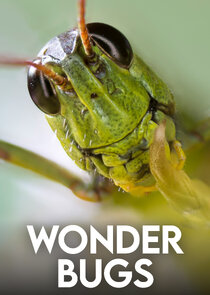Wonder Bugs

Sinopse
Arthropods are the most successful group of animals on the planet. We know of around 10 million species but many more await discovery. They include insects, spiders, scorpions and crustaceans, creatures which most people simply call bugs.
This series takes a close up look at how bugs survive in their miniature world, how they find food, find mates and avoid being eaten. When seen in extreme close-up, they all appear alien to us. That's because they are about as different from us as it's possible to be. Compared to us they are built inside out, with their skeleton on the outside. But this tough armour made them waterproof and arthropods were the first creatures to conquer dry land. Insects were also the first creatures to take to the air.
There are bugs everywhere. Part of the reason for this success is their ability to eat almost anything. Arthropods have a complex kit of mouthparts, evolved from primitive legs, that can be shaped by evolution to suit all kinds of diets. In the bug world, finding a mate is fraught with problems. Males often have to compete for females, and, from battering rams to horns, male bugs come equipped for fighting. But it's not just rival males that are dangerous. Some females, such as mantises or tarantulas are likely to eat their mates. Bugs are bite-sized packets of protein to many larger predators but they're masters at hiding in plain sight. Many have adapted to resemble the plants on which they live. But such perfect camouflage does more than just hide a potential meal - it allows some to become ambush predators.
Bugs have also evolved other ways to defend themselves. Some are toxic and foul-tasting, and advertise the fact with bright warning colours. Others are more devious. They mimic the warning colours of dangerous bugs. Nothing in Nature goes to waste and bugs play key roles in Nature's recycling teams. Bugs dispose of dead plants and animals. But when they move into our world and try to 'recycle' what they see as dead plants – our stored foods like cereals, and flour - we call them pests. But in reality they're just doing their jobs as Nature's clean-up crew. We might see them as alien, but our world couldn't function without bugs.
Informações
- Status: Em desenvolvimento
- Gênero: Natureza
- Estréia: Indefinida
- Próximo Episódio: Indefinido
- Emissora:
 Sky Nature
Sky Nature